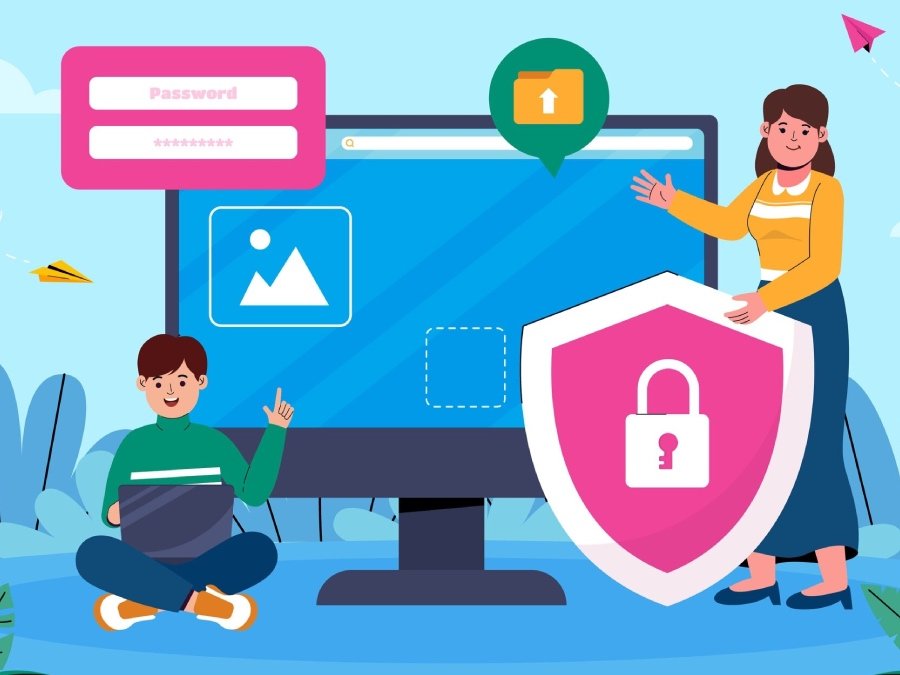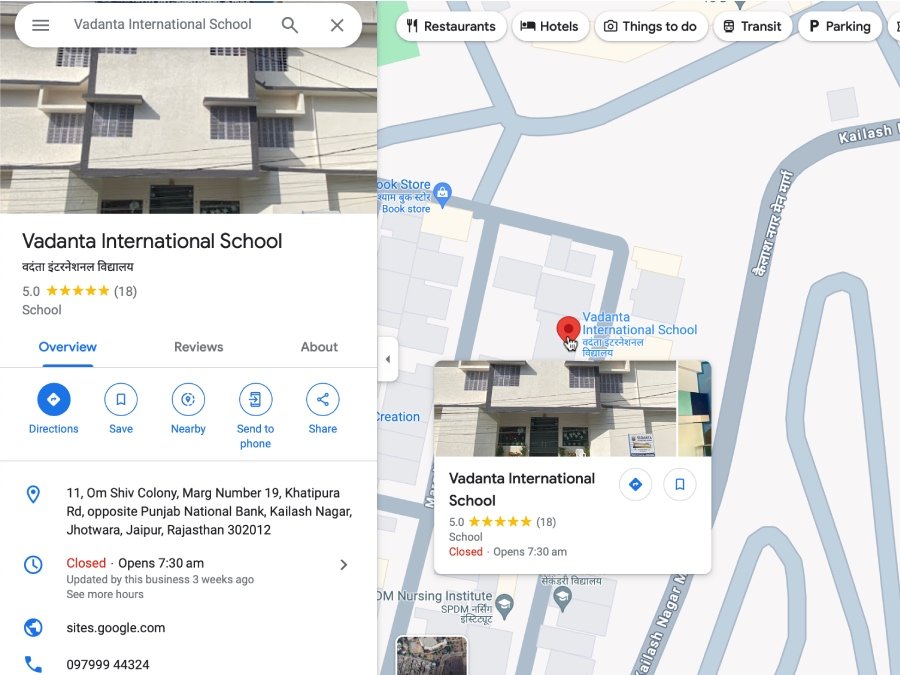Introduction
In today’s digital age, ensuring the safety and security of students and staff is of paramount importance for schools. With the increasing reliance on technology in education, it is crucial for schools to have a comprehensive plan in place to protect against cyber threats.
What is Cyber Safety?
Cyber safety refers to the practices and measures individuals or organizations take to protect themselves from online threats, risks, and harm. It involves promoting responsible and ethical online behavior, safeguarding personal information, and preventing cyberbullying.
What is Cyber Security?
Cybersecurity is a broader concept that encompasses the technologies, processes, and practices designed to protect computer systems, networks, and data from unauthorized access, attacks, and damage. It involves the implementation of security measures to ensure the confidentiality, integrity, and availability of digital information. Learn more
Importance for Schools:
- Protecting Students and Staff:
- Cybersecurity measures safeguard students, staff, and their sensitive information from potential threats and attacks.
- Data Privacy:
- Schools handle a significant amount of sensitive data, including student records. Cybersecurity ensures the protection of this data, maintaining privacy and compliance with regulations.
- Maintaining Trust:
- Ensuring a secure online environment fosters trust among students, parents, and staff in the school’s ability to handle digital resources responsibly.
- Preventing Cyberbullying:
- Cyber safety measures help prevent cyberbullying incidents, creating a safer and more positive online atmosphere for students.
- Ensuring Educational Continuity:
- Cybersecurity measures help prevent disruptions in educational services by safeguarding digital infrastructure, preventing data breaches, and ensuring the availability of online resources.
How to Identify Threats Vulnerability and Assess Risk Exposure in School
Identifying threats, vulnerabilities, and assessing risk exposure is a critical aspect of maintaining cybersecurity in schools. Here’s a systematic approach to help schools enhance their cybersecurity posture:
- Conduct a Risk Assessment:
- Start by conducting a comprehensive risk assessment to identify potential threats, vulnerabilities, and assess the overall risk landscape.
- Involve key stakeholders, including IT personnel, administrators, and teachers, in the assessment process.
- Identify Assets and Data:
- Identify and catalog all digital assets, including hardware, software, networks, and sensitive data (student records, financial information, etc.).
- Classify data based on its sensitivity and importance.
- Threat Identification:
- Identify potential threats that could impact the confidentiality, integrity, and availability of school resources.
- Common threats include malware, phishing attacks, insider threats, and physical theft or damage to devices.
- Vulnerability Assessment:
- Perform a vulnerability assessment to identify weaknesses in the school’s infrastructure, systems, and applications.
- Regularly scan networks and systems for known vulnerabilities.
- Asset and Access Management:
- Implement strong access controls to ensure that only authorized personnel have access to sensitive data and critical systems.
- Regularly review and update user access permissions.
- Network Security:
- Assess the security of the school’s network infrastructure, including firewalls, routers, and switches.
- Implement intrusion detection and prevention systems to monitor network traffic.
- Data Protection:
- Evaluate the measures in place for securing sensitive data.
- Implement encryption for data in transit and at rest to protect against unauthorized access.
- Physical Security:
- Assess the physical security of IT assets, including servers, networking equipment, and end-user devices.
- Ensure that physical access to sensitive areas is restricted.
- Incident Response Plan:
- Develop and review an incident response plan that outlines the steps to be taken in the event of a cybersecurity incident.
- Conduct drills to ensure the effectiveness of the response plan.
- Security Awareness Training:
- Provide regular cybersecurity awareness training to all staff members and students.
- Educate them on recognizing phishing attempts, the importance of strong passwords, and responsible online behavior.
- Regular Audits and Updates:
- Conduct regular security audits to identify and address potential vulnerabilities.
- Keep all software, including operating systems and security tools, up-to-date with the latest patches.
- Collaboration and Reporting:
- Establish channels for reporting security incidents or potential vulnerabilities.
- Encourage a culture of collaboration and openness regarding cybersecurity concerns.
- Compliance with Regulations:
- Ensure that the school’s cybersecurity practices align with relevant data protection regulations and standards.
- Third-Party Risk Assessment:
- Assess the security practices of third-party vendors or service providers that have access to school data or systems.
- Documentation and Documentation:
- Maintain detailed documentation of the risk assessment, vulnerability findings, and mitigation strategies.
- Regularly review and update documentation to reflect changes in the school’s IT environment.
By systematically addressing these steps, schools can proactively identify threats, assess vulnerabilities, and manage risk exposure effectively, contributing to a robust cybersecurity posture.
Guideline of Cyber Safety & Cyber Security for School
Implementing guidelines for cyber safety and security in schools is crucial to protect students, staff, and sensitive information. Here’s a set of guidelines that schools can consider:
Educate Students and Staff
The first step in ensuring cyber safety and security in schools is to educate students and staff about the potential risks and best practices. Schools should conduct regular training sessions to teach students about online safety, privacy, and the responsible use of technology. Staff members should also receive training on identifying and responding to cyber threats.
By promoting digital literacy and awareness, schools can empower their students and staff to make informed decisions and protect themselves from cyber threats.
Implement Strong Password Policies
One of the simplest yet most effective ways to enhance cyber security is to implement strong password policies. Schools should encourage students and staff to create complex passwords that include a combination of letters, numbers, and symbols. Passwords should be changed regularly and should not be shared with anyone.
Additionally, schools can consider implementing multi-factor authentication, which adds an extra layer of security by requiring users to provide additional information or verify their identity through a separate device.
Secure School Networks
Securing the school’s network is essential to prevent unauthorized access and protect sensitive information. Schools should ensure that their Wi-Fi networks are password protected and encrypted. Network security measures such as firewalls and intrusion detection systems should be implemented to monitor and block any suspicious activity.
Regular network audits should be conducted to identify vulnerabilities and address them promptly. It is also important to keep all network devices and software up to date with the latest security patches and updates.
Protect Personal Information
Schools collect and store a significant amount of personal information about students, staff, and parents. It is crucial to protect this information from unauthorized access or disclosure. Schools should have strict data protection policies in place and ensure that all personal information is stored securely.
Encryption should be used to protect sensitive data, both in transit and at rest. Access to personal information should be restricted to authorized personnel only, and regular data backups should be performed to prevent data loss in case of a security breach.
Monitor Online Activities
Monitoring students’ online activities is an important aspect of cyber safety and security in schools. Schools should have appropriate filtering and monitoring systems in place to prevent access to inappropriate content and to detect any signs of cyberbullying or other harmful behavior.
However, it is important to strike a balance between monitoring and respecting students’ privacy. Schools should clearly communicate their monitoring policies to students and ensure that they are in compliance with relevant privacy laws and regulations.
Respond to Incidents Promptly
Despite all preventive measures, cyber incidents can still occur. It is important for schools to have a well-defined incident response plan in place to address any security breaches or cyber attacks. The plan should include steps for containing the incident, investigating the cause, and notifying the appropriate authorities.
Regular drills and exercises should be conducted to test the effectiveness of the incident response plan and to train staff members on their roles and responsibilities during a cyber incident.
Conclusion
Cyber safety and security in schools is a collective responsibility that requires the cooperation of students, staff, and parents. By implementing the guidelines outlined in this article, schools can create a safe and secure digital environment that promotes learning and protects the privacy and well-being of all stakeholders.





